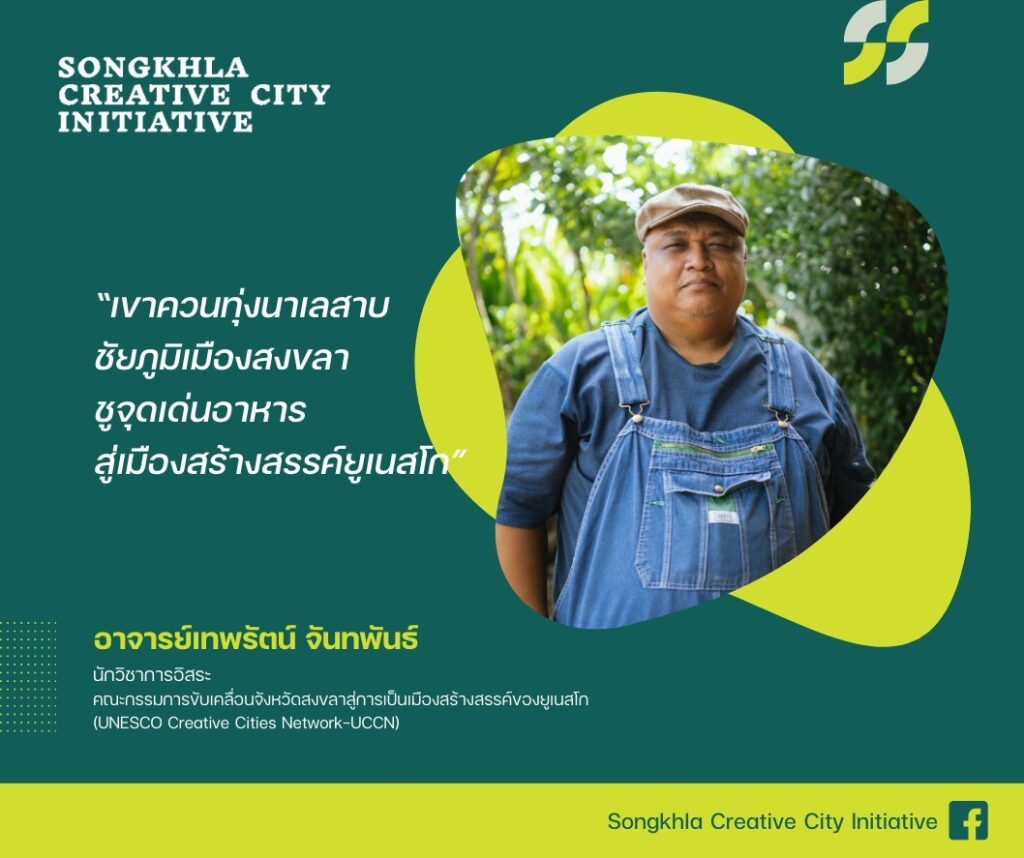An afternoon conversation on the culinary potential of Songkhla Province, with far-reaching stories from Khao Khuan, through rice fields, to lakes, Songkhla’s landscape, the city’s outstanding location, blending of cultures, local lifestyles, accumulated wisdom, and a journey through time from past to future.
‘Ajan Thepparat Chanthaphan’, or Professor Toh
an independent scholar and member of the Committee for Songkhla Province UNESCO Creative Cities Network-UCCN Initiative, is currently preparing data for submission and consideration in 2025.

Songkhla Province is outstanding in its strategic geographical location, encompassing five important river basins: Songkhla Lake, Rattaphum, Utapao, Sathing Phra Peninsula, and Thephachana. It provides a foundation of natural resources, or biomes, from which cultural diversity and accumulated wisdom from the past have been able to emerge.
In accordance with these factors, Songkhla is home to a variety of foods. In terms of geography, it is a city that utilizes the sea for livelihood at the base of Songkhla Lake, which connects the area to neighboring provinces such as Phatthalung and Nakhon Si Thammarat. The upper end of Songkhla Lake is abundant in fresh water fish, while the middle forms part of the coast on the Gulf of Thailand, and the lower end is situated in Koh Yo. Considered in terms of cultural diversity, the wisdom of the peninsula is apparent: water management permits production of fermented goods, red flour, fermented fish, and “wark” or a beverage fermented with palm yeast and sugar.
Moving to Hat Yai, a new city and center of opportunity, ready to adapt its economy to every era and change, the cuisine here combines elements from the cultures of different citizens, such as sticky rice with fried chicken, noodles, soy sauce, roasted soybeans, and various kinds of snacks.
However, further development is needed to reach the goal of becoming a UNESCO Creative City. Professor Toh says that the original value of the resource base, despite being an advantage, does not extend the fundamental concept any further, especially within the context of a city where only a small number of creators yet operate, including chefs creating original menus or entrepreneurs that have not yet reached the point of innovation or creative technology.
General awareness is still not widespread among the public, agricultural technology is not yet sufficiently responsive, communities are unable to manage their own resources due to continued centralization around government agencies, and mindsets are still unable to connect the ideas of local and global citizenship.
All of these factors require attention, support, and enhancement via additional value, appreciation, knowledge resources, and budget in order for development to continue.